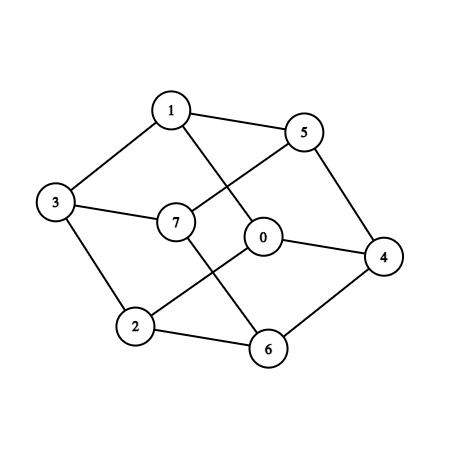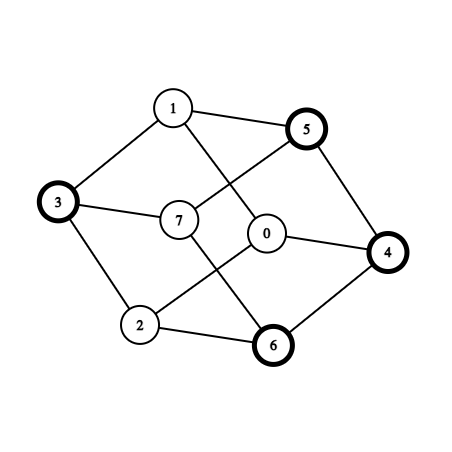CF1556G Gates to Another World
Description
As mentioned previously William really likes playing video games. In one of his favorite games, the player character is in a universe where every planet is designated by a binary number from $ 0 $ to $ 2^n - 1 $ . On each planet, there are gates that allow the player to move from planet $ i $ to planet $ j $ if the binary representations of $ i $ and $ j $ differ in exactly one bit.
William wants to test you and see how you can handle processing the following queries in this game universe:
- Destroy planets with numbers from $ l $ to $ r $ inclusively. These planets cannot be moved to anymore.
- Figure out if it is possible to reach planet $ b $ from planet $ a $ using some number of planetary gates. It is guaranteed that the planets $ a $ and $ b $ are not destroyed.
Input Format
N/A
Output Format
N/A
Explanation/Hint
The first example test can be visualized in the following way:
Response to a query ask 0 7 is positive.
Next after query block 3 6 the graph will look the following way (destroyed vertices are highlighted):
Response to a query ask 0 7 is negative, since any path from vertex $ 0 $ to vertex $ 7 $ must go through one of the destroyed vertices.